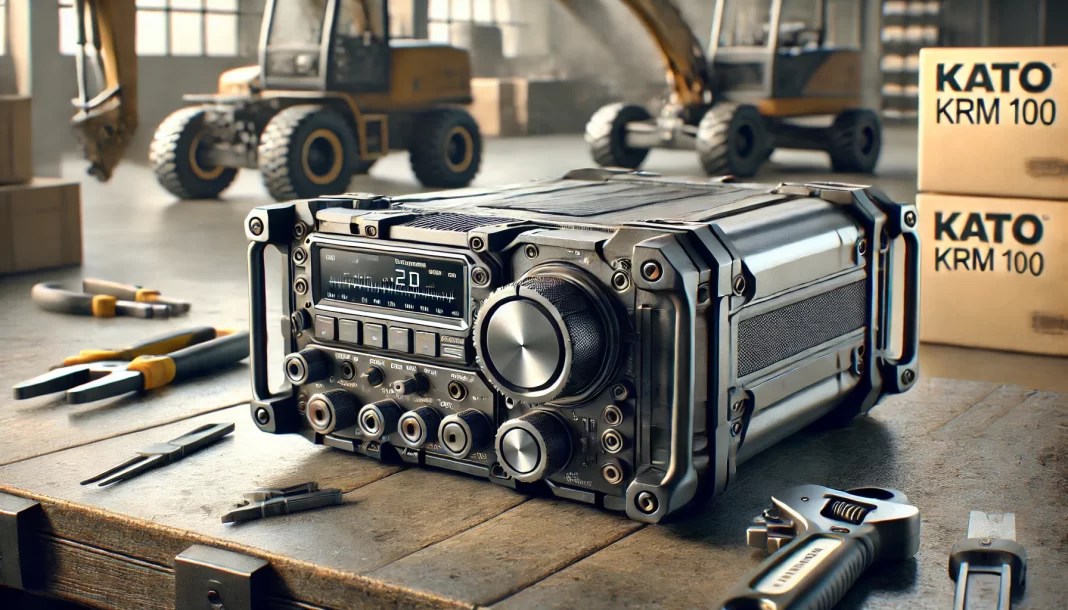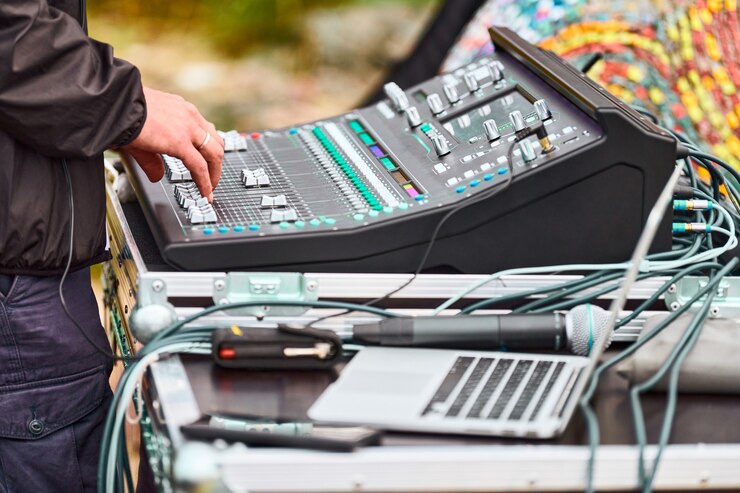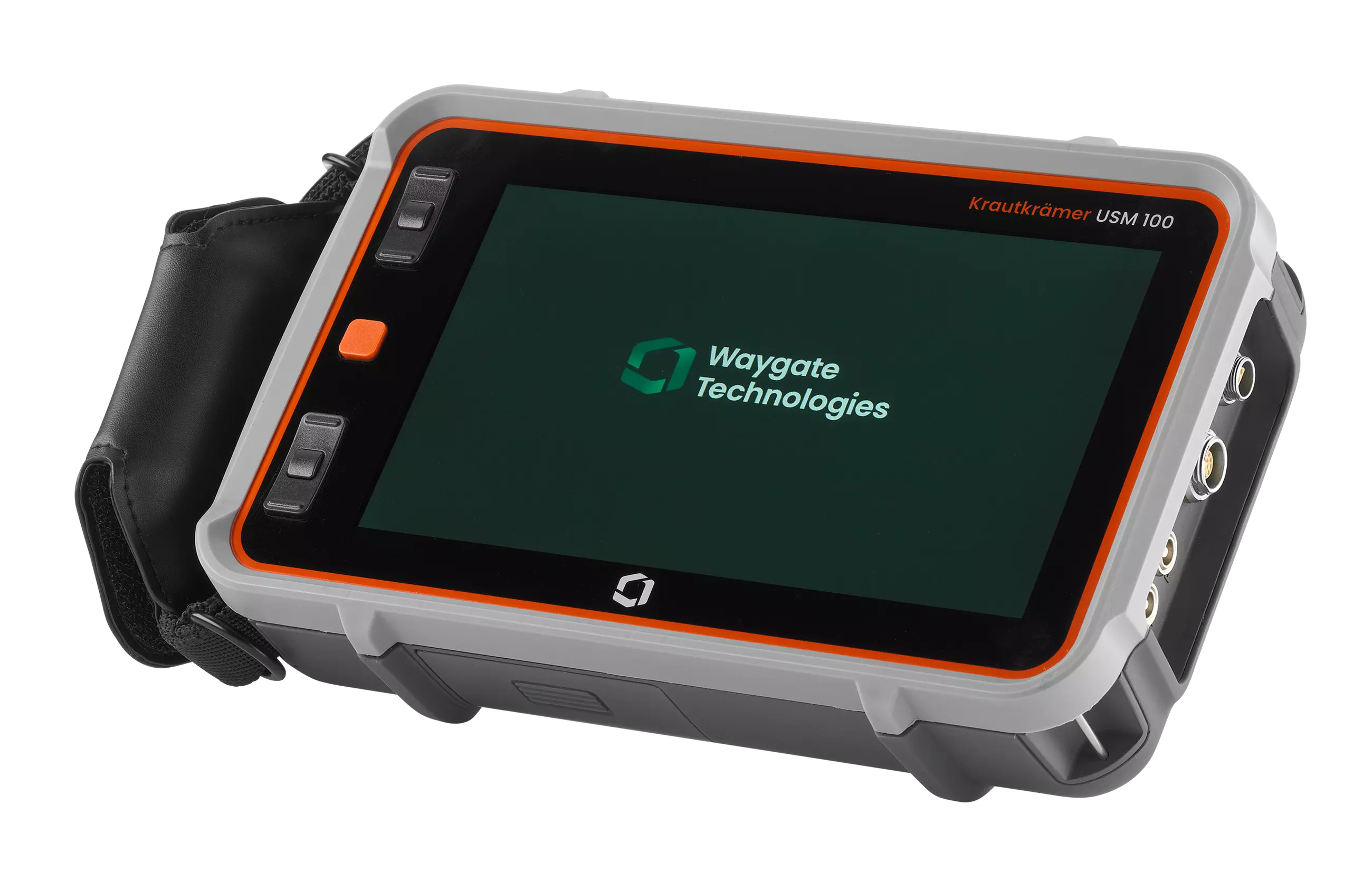Introduction to the Kato KRM 100 Receiver
The Kato KRM 100 Receiver is a cutting-edge device designed to enhance precision in measurement across a variety of applications. This receiver plays a significant role in industries such as construction and surveying, where accuracy is paramount. Its advanced technology allows users to achieve precise positioning, thereby reducing errors and improving overall project efficiency.
Primarily utilized for applications that require real-time data, the Kato KRM 100 Receiver integrates seamlessly with surveying equipment and construction machinery. This compatibility is crucial for professionals managing large-scale projects, as it allows for enhanced workflow and productivity. The receiver operates efficiently under different environmental conditions, making it an indispensable tool for outdoor tasks as well.
One of the key features of the Kato KRM 100 Receiver is its ability to connect to GNSS satellites, providing users with instant access to location data. This capability ensures that measurements are accurate, whether they are being used for site grading, road construction, or other geospatial applications. The device also boasts a user-friendly interface, making it accessible to both seasoned professionals and those who are relatively new to the field of surveying and construction.
Furthermore, the Kato KRM 100 Receiver exemplifies durability and reliability, essential traits for equipment used in challenging work environments. As a testament to its quality, users often report improved outcomes in their projects, attributing this success to the precise measurements afforded by the receiver. Understanding the impact of this tool on various industries is essential for those considering its utility in their operational practices.
Key Features of the Kato KRM 100 Receiver

The Kato KRM 100 Receiver is engineered with a meticulous focus on performance and adaptability, making it a compelling choice for various applications. One of its standout features is its robust technical specifications, providing users with reliable operation in diverse settings. This receiver boasts an impressive frequency range that significantly enhances connectivity and signal strength, ensuring seamless communication in the field.
Additionally, the Kato KRM 100 Receiver is designed with compact dimensions that facilitate easy transport and installation. Weighing under a few kilograms and featuring a slim profile, this receiver is suitable for both fixed and mobile deployments, accommodating the needs of professionals across multiple industries. Its user-friendly interface is equally notable, allowing for straightforward navigation and accessibility, even for those with minimal technical expertise.
Performance metrics are key to understanding the Kato KRM 100 Receiver’s capabilities. It excels in terms of sensitivity and selectivity, two critical factors that contribute to the clarity and stability of received signals. With advanced filtering technologies integrated into its design, the receiver minimizes interference from external sources, ensuring consistent performance in challenging environments.
Moreover, innovative technologies such as digital signal processing (DSP) enhance the Kato KRM 100 Receiver’s capabilities. DSP technology allows for real-time adjustments and optimizations of received signals, thus improving audio clarity and overall user experience. This feature is particularly beneficial in dynamic settings where conditions may vary. Overall, the Kato KRM 100 Receiver integrates these technical advantages to provide an exceptional blend of functionality and reliability, setting it apart from other devices in the market.
Benefits of Using the Kato KRM 100 Receiver

The Kato KRM 100 Receiver offers numerous advantages that enhance performance across various applications, particularly in grading, excavation, and layout tasks. One of the most significant benefits of this receiver is its remarkable accuracy. The Kato KRM 100 Receiver ensures precise measurements, which are crucial for any construction or surveying activity. The high level of precision minimizes errors, leading to improved outcomes and reduced rework, thus saving time and resources.
In addition to its accuracy, the Kato KRM 100 Receiver is designed with user-friendliness in mind. Its intuitive interface allows operators, regardless of their experience level, to easily navigate the functionalities. This ease of use enables teams to quickly adapt to the system, thereby boosting overall productivity. With a straightforward setup process, users can deploy the receiver in a matter of minutes, allowing for a seamless integration into ongoing projects.
Durability is another commendable feature of the Kato KRM 100 Receiver. Built to withstand tough working conditions, it can resist harsh weather and external impacts, making it an ideal choice for construction sites. This ruggedness ensures longevity and reduces the need for frequent replacements or extensive maintenance, ultimately benefiting the project’s budget and timelines.
Moreover, using the Kato KRM 100 Receiver can significantly enhance efficiency across various tasks. By enabling more streamlined workflow, teams can complete projects faster without compromising quality. The receiver’s reliable performance allows for real-time data collection and processing, which contributes to more informed decision-making in the field. Overall, the combination of accuracy, user-friendliness, durability, and efficiency makes the Kato KRM 100 Receiver an invaluable asset for any professional looking to improve their operational effectiveness.
How to Set Up the Kato KRM 100 Receiver

Setting up the Kato KRM 100 Receiver requires careful preparation and attention to detail to ensure optimal performance. First, gather all necessary tools and materials, including a power source, a compatible remote control, and the relevant user manuals. Having these items ready will help facilitate a smooth setup process.
Begin by selecting an appropriate location for the receiver. The Kato KRM 100 should be placed in a well-ventilated area away from direct sunlight and any potential obstructions that could interfere with its signals. Ensure that the surface is stable and secure, allowing for ease of access to both the receiver and any connected devices.
Next, connect the receiver to a power source. Before plugging in the Kato KRM 100 Receiver, double-check that the power supply meets the required specifications. After powering on the receiver, you will notice indicator lights that confirm its operational status.
Proceed to connect the Kato KRM 100 Receiver to your desired audio or visual devices, including speakers or a television. Use the appropriate cables, ensuring they are securely attached to both the receiver and the devices you are interfacing. Refer to the user manual for specific connection instructions relevant to your setup.
Once connections are established, use the remote to navigate to the setup menu of the Kato KRM 100 Receiver. Here, you can calibrate settings such as audio levels and channel preferences. It is vital to follow the on-screen instructions to guarantee that all configurations are applied correctly. Taking time to fine-tune these settings will significantly improve the overall experience.
Finally, after completing the setup process, test the system to ensure everything is functioning as expected. If any difficulties arise, revisit the user manual or consult online resources for troubleshooting. Following these steps will help set a solid foundation for utilizing the Kato KRM 100 Receiver effectively.
Best Practices for Using the Kato KRM 100 Receiver

To fully leverage the capabilities of the Kato KRM 100 Receiver, adhering to established best practices is essential. Proper positioning of the receiver is a foundational step that can significantly enhance data accuracy and reliability. It is advisable to place the device in an open area, away from obstructions such as trees, buildings, or other structures that may cause interference. This positioning ensures that the receiver can effectively receive signals, thereby optimizing its performance.
In addition to strategic placement, understanding how to read and interpret the data generated by the Kato KRM 100 Receiver is crucial. Users should familiarize themselves with the display interface and the various indicators that signal different operational states. Taking the time to study the user manual can provide valuable insights into the different metrics reported by the device, from signal strength to accuracy levels. Such knowledge allows users to make informed decisions based on real-time data and utilize the receiver to its fullest potential.
Another important aspect of using the Kato KRM 100 Receiver effectively involves routine maintenance and calibration. Regular checks for software updates can ensure that the receiver operates with the latest improvements and features. Additionally, cleaning the device periodically and checking for any wear and tear can help avert potential issues that could affect performance. User feedback indicates that well-maintained receivers tend to yield more consistent and reliable results.
By following these best practices in positioning, data interpretation, and maintenance, users can maximize the effectiveness of the Kato KRM 100 Receiver. Implementing these strategies not only improves operational efficiency but also enhances the overall experience of using this advanced device in various professional applications.
Common Issues and Troubleshooting the Kato KRM 100 Receiver
The Kato KRM 100 Receiver is a reliable tool designed to enhance user experiences in model train operations. However, like any electronic device, users may encounter issues that affect its performance. Understanding these common problems and their solutions can ensure uninterrupted enjoyment of your railroading activities.
One frequently reported issue with the Kato KRM 100 Receiver is a loss of signal or connectivity problems. This can be caused by several factors, including interference from nearby devices or an obstacle obstructing the receiver. To troubleshoot this, ensure that the receiver is placed in a location where there is minimal interference. Additionally, check if the power supply is functioning correctly, and verify that the connections to other components are properly secured.
Another problem users might face is difficulty in pairing the Kato KRM 100 Receiver with the controller. Proper pairing is essential for seamless operation. If you experience this issue, consider resetting both devices and starting the pairing process anew. Ensure that both the receiver and the controller are powered on during this procedure. Additionally, refer to the user manual for specific pairing instructions, as different firmware versions may require slightly different steps.
A further concern is erratic or unresponsive behavior during operation. This can occur due to a variety of reasons, including software glitches or low battery levels. To resolve this, first, check the batteries and replace them if necessary. If the issue persists, performing a factory reset on the Kato KRM 100 Receiver may restore optimal functionality. It is important to consult the manufacturer’s guidelines to correctly execute the reset procedure.
In summary, by being aware of these common issues and their troubleshooting solutions, users can enhance their experience with the Kato KRM 100 Receiver. The receiver is designed to facilitate enjoyable and efficient model train operation, and resolving these challenges promptly can help users return to their projects without significant delays.
Comparative Analysis: Kato KRM 100 vs. Other Receivers

When evaluating the Kato KRM 100 receiver, it is essential to consider how it compares to other similar devices within the market. The Kato KRM 100 has distinguished itself through its robust performance and unique features that set it apart from competitors. One of the primary parameters in which receivers are measured is performance. The Kato KRM 100 is equipped with advanced signal processing technology, ensuring improved sound clarity and stability in broadcast reception compared to other models, which may struggle in certain environments.
Pricing is another crucial factor in the comparative analysis. The Kato KRM 100 receiver positions itself competitively within the market, offering high-quality performance without exorbitant costs. While some alternatives may offer similar features at a lower price, they often compromise on quality and reliability, which can be crucial for users in professional settings. Thus, the Kato KRM 100 provides excellent value for money, attracting users who prioritize performance alongside affordability.
User satisfaction is a vital indicator of a product’s success and reliability. Customer reviews and testimonials for the Kato KRM 100 receiver generally highlight its ease of use and durability, which are often less emphasized in competing models. Users have praised its intuitive interface, making it accessible for both novices and experienced individuals. In contrast, some competitors may feature convoluted controls that deter potential users. Moreover, the Kato KRM 100 incorporates unique features, such as customizable settings and compatibility with various devices, enhancing user engagement.
In summary, the Kato KRM 100 receiver stands out in performance, affordability, and user satisfaction when compared to other receivers on the market. Its blend of high-quality features and competitive pricing makes it a favorable option for consumers seeking reliability and efficiency in their receiver choice.
Customer Reviews and User Experiences

The Kato KRM 100 Receiver has garnered attention from model railway enthusiasts due to its reliable performance and user-friendly features. Many users have shared their positive experiences regarding the quality of the receiver. It is often praised for its compatibility with various command stations, allowing users to integrate it seamlessly into existing setups. One user noted, “I was able to connect my Kato KRM 100 Receiver to my DCC system without any hassle, improving my setup’s functionality significantly.” This ease of integration is a common theme among reviews.
Additionally, users have highlighted the Kato KRM 100 Receiver’s impressive range and signal reliability. Many have reported that they rarely experience interruptions while operating their model trains, citing that the range surpasses their expectations. A frequent reviewer stated, “The signal strength of the Kato KRM 100 Receiver is solid; I can control my layout from across the room without issues.” Such testimonials speak to the receiver’s effectiveness in varied environments, making it a favorite among hobbyists.
However, not all feedback is unanimously positive. Some users have expressed concerns regarding the initial setup process, finding the documentation to be somewhat lacking. They mentioned that while the product ultimately works well, new users may face a steep learning curve. Despite this, many acknowledged that the benefits of the Kato KRM 100 Receiver far outweigh these minor inconveniences. As one reviewer concluded, “Once I figured it out, I couldn’t imagine my model railway without it.”
User experiences indicate that the Kato KRM 100 Receiver remains a dependable choice for model railway aficionados, providing both performance and reliability, while also having a few areas for improvement in user guidance.
Conclusion: Is the Kato KRM 100 Receiver Right for You?
In evaluating the Kato KRM 100 receiver, it is essential to consider various aspects, including its features, benefits, and how well it aligns with your specific requirements. This receiver has proven to be an effective solution for many users, particularly those engaged in modeling or hobbyist applications. It offers commendable functionality with user-friendly features, which enhance its appeal among both novice and experienced individuals.
The Kato KRM 100 receiver stands out for its robust performance, providing reliable connectivity and a range of compatible devices. Users appreciate its seamless integration with Kato locomotives, making it a versatile option in model railroading. Additionally, the programmable settings allow for personalized adjustments, catering to diverse preferences and operational scenarios. Such adaptability is a significant advantage for users who may wish to expand their collections or modify their setups over time.
Another important consideration is the price point of the Kato KRM 100 receiver. While it may represent a significant investment for some, the receiver’s durability and advanced features contribute to its overall value. Potential buyers should weigh the long-term benefits against the initial costs to ensure that it meets their budgetary requirements. Moreover, customer feedback consistently highlights satisfaction regarding performance, further reinforcing its reputation within the market.
Ultimately, the Kato KRM 100 receiver is an excellent option for those seeking a dependable and feature-rich solution in their model railroading endeavors. By reflecting on the outlined information and assessing your specific needs and preferences, you will be better positioned to make an informed decision regarding its suitability for your requirements. With a focus on quality and ease of use, the Kato KRM 100 receiver holds promise for enhancing your modeling experience.






